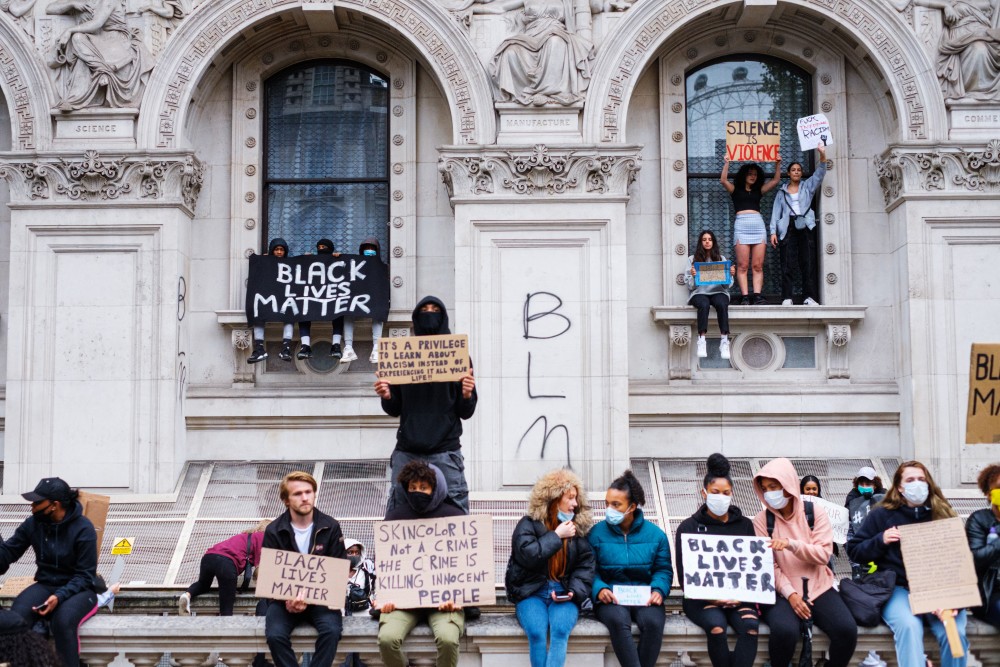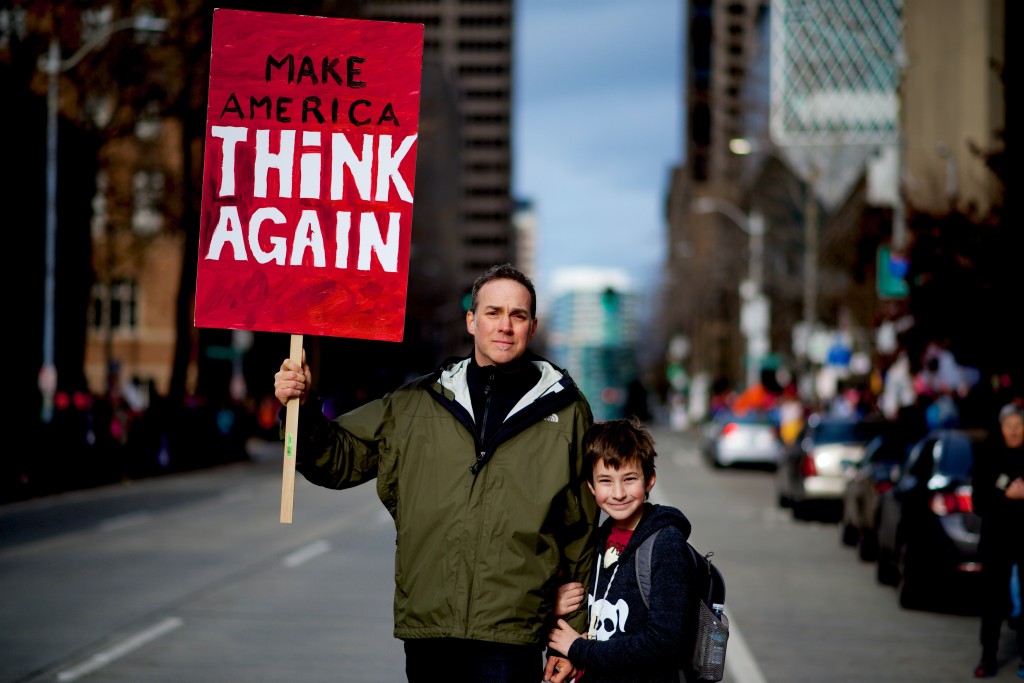It’s been a few months since ‘far-right’ protestors, or as I call them, racists, attacked the Black Lives Matter peaceful protests in London. The way that these events were covered in the press, and the growing discourse around Black Lives Matter has revealed both the pitfalls and the potential of our contemporary language.
My commentary is just a combination of personal beliefs and the external ideas that I have recently consumed. The voices that I have used to shape and inform this piece must all be appreciated in their entirety, and there is a further reading list at the end for this purpose.
Nearly all of the news coverage about the unrest referred to the white violent protestors as the ‘far-right’ whilst anyone that clashed with them was simply a Black Lives Matter protestor. The phrase ‘far-right’ creates both a physical and figurative distance between the racist statue defenders and ‘mainstream society’. This allows the rest of the right-wing to not only avoid critique but also to mentally assuage themselves of guilt.
This shirking of responsibility and reputation is in itself only possible from a position of privilege. Nikesh Shukla sums this up in his introduction to The Good Immigrant when he explains the title of the book. This idea originates from the writer Musa Okwonga, who says that ‘the biggest burden facing people of colour in this country is that society deems us bad immigrants’ and this can only be overcome by succeeding either in society or in mainstream culture. Whilst politicians and the white press can manoeuvre themselves away from violent protestors, the Black Lives Matter protestors can do little to combat the way that they are grouped together. The way that people are linguistically grouped has a great societal and political impact, for an example check out this article provides an insightful analysis of the acronym BAME and how best to use it.
The way that language can obscure or enact this politics of association can be seen in Boris Johnson’s tweets about the protests in London. In the tweets addressing the civil unrest in their respective countries, Boris Johnson and Donald Trump’s twitter accounts both made explicit use of the words ‘thugs’ or ‘thuggery’. Not only did Johnson choose to trade language with Trump, but he also then used the word to equate the ‘racist thuggery’ of the ‘far-right’ protestors, to the BLM ‘demonstrators [that] have been subverted by thuggery’. For Johnson, the division is clear: Black Lives Matter = okay, Violence = not okay, Racist Thuggery = not okay, referring to African people as ‘piccaninnies’ = okay. Simple right?
This subtle manoeuvring between what is right and what is wrong is enacted in everyday speech and operates often on a subconscious level. An example of this is what I like to call the ‘but’ person. We’ve all met them. “I’m not saying these people shouldn’t get the jobs, BUT”, “Of course they aren’t all like this, BUT”, “I can see why they want the statue gone, BUT”. By dividing their sentences, they get all the room they need to separate themselves from the ‘racists’ before freely expressing their own ‘personal’ views. The truth is that these two strands are not independent from one another and should never be treated as such. I have decided to call these people The But Army: this being fitting as it is also the place from which their words are emitted. When you find yourself reaching for that ‘BUT’ I invite you to think about it first, because thoughts, more often than not, spring from one another.
While these people seek to justify their own point of views by first aligning themselves with an accepted one, politicians are rarely so explicit about their own beliefs such as Keir Starmer who seems to be entirely unsure of his words. George Orwell in his essay Politics and the English Language writes that ‘political speech and writing are largely the defence of the indefensible’ and that, as a result, much of it is ‘euphemism’. In condemning the graffitiing of Churchill’s statue, Johnson referred to it as ‘attack by violent protestors’ and states that to tear down statues would be to ‘censor our past’. Johnson is wrong for many reasons (to truly realise how much of British past has already been censored (check out the amazing Brit(ish) by Afua Hirsch), and his language works hard to repaint events in order to then denounce them.
The point where political language becomes particularly dangerous is when it crosses over from an utterance into a speech act. A speech act is an utterance that is also an action, eg. “you’re fired”. When Trump tweeted ‘When the looting starts the shooting starts’ he’s not just spewing evocative slogans, but he’s mobilising his official and unofficial forces in America. This isn’t just a statement, it’s an order.
However, words can also be weaponised for good and the huge surge in the use of the phrase Black Lives Matter is showing us how this is possible. Despite many brands and companies hypocritically churning this out as soon as it became the thing to do, there have been those that are turning this into action (for example the BBC.) By saying Black Lives Matter and then carrying out an action that places value on Black lives, it stops being just speech and becomes a speech act. Actions that must continue even when the hashtag drops off of twitter. If you’re feeling unsure about how to turn language into action then watch this Instagram video from Mary Mandefield.
Aside from speech acts, language has become one of the biggest tools to bring people together as new discourses are developing and old ones are blending. Reni Eddo-Lodge in Why I’m No Longer Taking to White People About Race writes that ‘my feminist thinking gave rise to my anti-racist thinking’ as a ‘framework to begin understanding the world’ before going on to describe how she was later excluded from the overwhelmingly white discussions of feminism. Magazines like Gal-dem are championing this intersectionality as it explores what it means to be a woman and non-binary people of colour, subject to both a sexualised and racialised world. This blending of discourses is reflected in the evolution of language in terms such as ‘Misogynoir’, coined by Moya Bailey, or Black Trans Lives Matter which has increased in usage in the recent weeks. Moreover, there are more discussions happening within specific contexts, such as in the TV or Publishing industries. The mingling of discourses not only provides a space for people who may have previously felt excluded but also means that rather than vying for importance, dialogues can now support one another.
As more discussions happen across social and industry settings, we are reminded that although language can be used to divide or confuse us, we should never forget the power it has to bring people together and aid us on our path to understanding. Language is something that we can all have an impact on, think about all those phrases you’ve picked up from your friends. Now is a time for thinking about the language we consume and use because language must change on an individual level for us to see wider change.
Further Reading
Brit(ish) Afua Hirsch
The Good Immigrant Edited by Nikesh Shukla
Film of the Week
Sound of the Week


